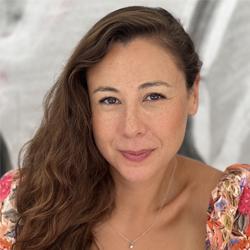
Alexis Sperling
Postdoctoral research associate
Research group: Plant-parasitic interactions

Biography
I started off at the University of Victoria (Canada) in biochemistry and biology and then moved to KTH (Sweden) for my masters in bioreactors and protein engineering. I did my PhD at the University of Cambridge (UK) in the Zoology Department on epithelial patterning in Drosophila eggs. My first postdoc was on centrosome migration in Drosophila eggs and my second postdoc was on the genetic basis of parthenogenesis in Drosophila. I am excited to take my knowledge in cell and developmental biology into my new research on the cell molecular biology of plant parasite interactions, specifically on effector biogenesis in nematodes. I am working towards building knowledge of the fundamental biology of pathogenic nematodes in order to gain insight into how we can prevent pathogenic nematode infections.
Publications
Publication
The SUbventral-Gland Regulator (SUGR-1) of nematode virulence
Date: 10 March 2025
Contributors: Clement Pellegrin, Anika Damm, Alexis L. Sperling, Beth Molloy, Dio S. Shin, Jonathan Long, Paul Brett, Tochukwu Chisom Iguh, Olaf P. Kranse, Andrea Díaz-Tendero Bravo, Sarah Jane Lynch, Beatrice Senatori, Paulo Vieira, Joffrey Mejias, Anil Kumar, Rick E. Masonbrink, Tom R. Maier, Thomas J. Baum, and Sebastian Eves-van den Akker
Journal: PNAS
Publication
The origin, deployment, and evolution of a plant-parasitic nematode effectorome
Date: 29 July 2024
Contributors: Beth Molloy, Dio S. Shin, Jonathan Long, Clement Pellegrin, Beatrice Senatori, Paulo Vieira, Peter Thorpe, Anika Damm, Mariam Ahmad, Kerry Vermeulen, Lida Derevnina, Siyuan Wei, Alexis Sperling, Estefany Reyes Estévez, Samuel Bruty, Victor Hugo Moura de Souza, Olaf Prosper Kranse, Tom Maier, Thomas Baum, Sebastian Eves-van den Akker
Journal: Plos Pathogens
Publication
Protocol for preparing Drosophila genomic DNA to create chromosome-level de novo genome assemblies
Date: 21 June 2024
Contributors: AL Sperling, DK Fabian, E Garrison, DM Glover
Journal: STAR protocols
Publication
The SUbventral-Gland master Regulator (SUGR) of nematode virulence
Date: 12 February 2024
Contributors: Clement Pellegrin, Anika Damm, Alexis L. Sperling, Beth Molloy, Dio S. Shin, Jonathan Long, Paul Brett, Andrea Díaz-Tendero Bravo, Sarah Jane Lynch, Beatrice Senatori, Paulo Vieira, Joffrey Mejias, Anil Kumar, Rick E. Masonbrink, Tom R. Maier, Thomas J. Baum, Sebastian Eves-van den Akker
Journal: Biorxiv
Publication
Protocol for screening facultative parthenogenesis in Drosophila
Date: 15 December 2023
Contributors: AL Sperling, DM Glover
Journal: STAR protocols
Publication
Whole mount multiplexed visualization of DNA, mRNA, and protein in plant-parasitic nematodes
Date: 4 December 2023
Contributors: AL Sperling, S Eves-van den Akker
Journal: Plant Methods
Publication
Aneuploidy during development in facultative parthenogenetic Drosophila
Date: 28 November 2023
Contributors: AL Sperling, DM Glover
Journal: Heredity
Publication
A genetic basis for facultative parthenogenesis in Drosophila
Date: 11 September 2023
Contributors: Alexis L. Sperling, Daniel K. Fabian, Erik K. Garrison, and David M. Glover.
Journal: Current Biology
Publication
Parthenogenesis in dipterans: a genetic perspective.
Date: 29 March 2023
Contributors: Alexis L. Sperling and David M. Glover.
Journal: Royal Society B: Biological Sciences.
Publication
The careful control of Polo kinase by APC/C-Ube2C ensures the intercellular transport of germline centrosomes during Drosophila oogenesis
Date: 30 June 2021
Contributors: Alexis L. Braun, Francesco Meghini, Gema Villa-Fombuena, Morgane Guermont, Elisa M. Fernandez, Zhang Qian, Maria D. Martin-Bermudo, Acaimo Gonzalez-Reyes, David M. Glover, Yuu Kimata
Journal: Open Biology